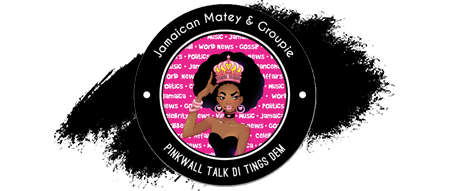
[35] Then, on 6 February 2014, after the matter had already been on foot for close to
eight weeks, there was a dramatic turn of events. As a result of a report made to the
Registrar by a member of the jury (‘juror number 11’), the judge invited all counsel in the
case to see him in chambers. Although the meeting was placed on the record of the court,
none of the appellants was invited to attend. Juror number 11, who was present at the
meeting, told the judge that her son had been in custody at the Horizon Adult Correctional
Centre (‘Horizon’) since August 2011. After the appellants’ trial had begun, on a Friday
when there was no sitting of the court, she went to Horizon to visit her son. As she awaited
his arrival in the lobby, Mr St John came into the area. He appeared to be surprised to see
her. When she spoke to her son on a subsequent occasion, he told her that Mr Palmer
mentioned to him that Mr St John had told him that he had seen his mother, but that he
(Mr Palmer) had not told the other appellants about it. On hearing this, juror number 11
became concerned for her son’s safety. She gave as the basis for her fear the fact that
the appellants now knew that her son was at Horizon, and that he and Mr St John were
housed on the same block.
[36] After some discussion, the judge indicated, with the apparent agreement of all
counsel present in his chambers, that he would release juror number 11 from further
service on the jury. While still in chambers, the judge then made further enquiries of the
forewoman, to whom juror number 11 had also spoken, as to whether the other members
of the jury were aware of what she had said. The forewoman stated that they were not.
She assured the judge that she felt able to continue with her duties as a juror, although
she intended to say something to the other jurors, “to soothe everybody’s mind” (Vol VII,
page 4063 of the transcript). This elicited a suggestion from the judge that, insofar as
juror number 11 was concerned, the forewoman might want to tell the other jurors
something along the lines that, “[t]he Court feels that her personal situation will not allow
her to continue and you don’t know what was said to us”. On the resumption of the trial
in open court, the judge excused juror 11, explaining that she had a “personal difficulty
which will cause her not to be able to serve on the panel further” (Vol VII, page 4065 of
the transcript).
[37] And finally, on 13 March 2014, which, as it turned out, was the last day of his
summation, the judge was again obliged to convene a hearing in his chambers. Counsel
for the appellants and for the prosecution, including Miss Paula Llewellyn QC, the Director
of Public Prosecutions, were in attendance. The appellants were again absent. The judge
told counsel that it had been brought to his attention that a member of the jury had
attempted to “persuade another member of the jury by offering a [sic] $500,000 to do a
particular thing … to go which way … I don’t know what it is, but whatever way”
(Supplemental Record of Appeal, Vol X, page 1). It appears that the juror had made an
offer to more than one of the others. The juror who made these offers was said to be the
same juror who had had the encounter with defence counsel at an earlier stage of the
trial.
[38] The forewoman was again invited into the judge’s chambers. There, she was
questioned at length by the judge as to the circumstances in which the offers were
allegedly made. It appeared that the forewoman had recorded the exchange between
herself and the juror who made the offers. After the forewoman was excused from
chambers, the judge asked, perhaps rhetorically, “Can we possibly continue or we have
to bring it to an end? That is the decision I have to make” (Supplemental Record, Vol X,
page 10).
[39] After a 10-minute break, during which the prosecution and defence teams
conferred separately, Miss Llewellyn indicated that the prosecution was prepared to
proceed, but suggested that the judge should, “[j]ust warn [the jury] again about their
oath”. However, both members of the defence team who spoke, Mr Tavares-Finson and
Mr Rogers, expressed serious reservations about proceeding under the circumstances.
After hearing counsel on both sides, the judge indicated that he would “be proceeding to
finality” that afternoon (Supplemental Record, Vol X, page 12).
[40] As he said he would, the judge concluded his summation shortly after 3:30 pm
that afternoon and the jury were invited to retire at 3:42 pm. At 5:35 pm they returned
with a verdict which was not unanimous. So, after advising them that the time at which
the law permitted a majority verdict to be taken had not yet arrived, the judge sent them
out again at 5:46 pm. Just over 20 minutes later, at 6:08 pm, the jury returned to court
with a verdict (by a majority) of guilty of murder against the appellants.
The issues on appeal
[41] At the start of this appeal, counsel for the appellants all sought and were granted
permission to abandon the original grounds of appeal filed on behalf of their respective
clients and to argue the supplemental grounds filed in their stead. As might have been
expected, the appellants filed a great many supplemental grounds of appeal between
them. However, there was also considerable overlap between the grounds and we hope
that we do them no disservice by categorising the issues which arise for our consideration
in this appeal as follows:
A) The admissibility of the cellular phone and video evidence
(exhibit 14C) (including the judge’s directions to the jury on
these matters)
(i) whether the technology evidence admitted at the trial (including
exhibit 14C) was in breach of statute and common law and, if so,
the effect of the breach on the appellants’ trial (ground 10/Shawn
Campbell (SC), grounds 1 and 3/Adidja Palmer (AP), Kahira Jones
(KJ), Andre St John (AStJ));
(ii) whether the directions of the judge on how to approach this
evidence were adequate in all the circumstances (grounds 2 and
4/AP, KJ, AStJ).
B) The judge’s handling of the jury management issues which arose
during the trial
(i) whether the appellants should have been present during the conduct
by the judge of hearings in chambers with respect to the matters
relating to the jury (ground 5/SC and ground 11/AP, KJ and AStJ);
(ii) whether the judge should have conducted an enquiry or discharged
the jury when he was apprised of issues relating to the offer of a
bribe to the foreman/jury (ground 8(a) and ground 8(b)/SC) ;
(iii) whether the late retirement of the jury resulted in undue pressure
on them to arrive at a verdict (ground 7/SC and ground 8/AP, KJ and
AStJ);
(iv) whether the conduct of the learned Director of Public Prosecutions
amounted to prosecutorial misconduct (ground 6/SC).
C) The judge’s directions to the jury (other than in relation to the
admissibility of the cellular telephone and video evidence)
(i) whether the judge’s directions to the jury in relation to the letter
purportedly written by Mr Chow were inappropriate, inaccurate
and/or prejudicial to the appellants, thus denying them the substance
of a fair trial (ground 5/AP, KJ, AStJ);
(ii) whether the judge’s directions in respect of the treatment of
inferences were adequate (ground 6/AP, KJ, AStJ);
(iii) whether the judge’s directions in respect of the law of circumstantial
evidence were adequate (ground 7/AP, KJ, AStJ);
(iv) whether the judge’s directions on the proper approach to the unsworn
statements made by the appellants were adequate and/or appropriate
(ground 9/AP, KJ, AStJ);
(v) whether the judge made unjustified, unreasonable, improper,
palpably biased and/or prejudicial comments with respect to different
aspects of the evidence (ground 10/AP, KJ, AStJ);
(vi) whether the judge dealt with the respective defences of the
appellants adequately or fairly (grounds 9/SC and 14/KJ, AStJ);
(vii) whether, on the evidence adduced at the trial, the judge erred in not
leaving it open to the jury to return verdicts of manslaughter, or at
any rate in relation to the appellants Jones and St John (grounds 15
and 16/AP, KJ, AStJ).
D) The admissibility of Deputy Superintendent Thompson’s
evidence
E) The impact of publicity
Whether, given the nature, extent and volume of the publicity
regarding the trial (pre-trial, during trial, post-trial) the appellants can
receive a fair trial in Jamaica (ground 13/AP, SC and AStJ).
